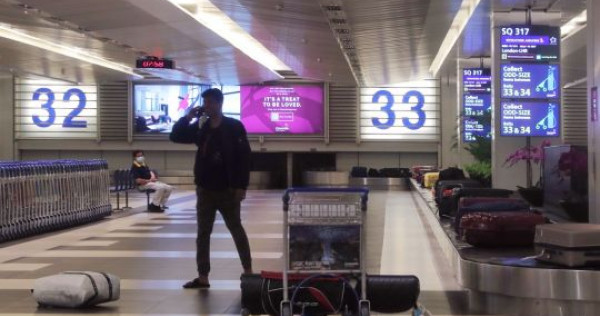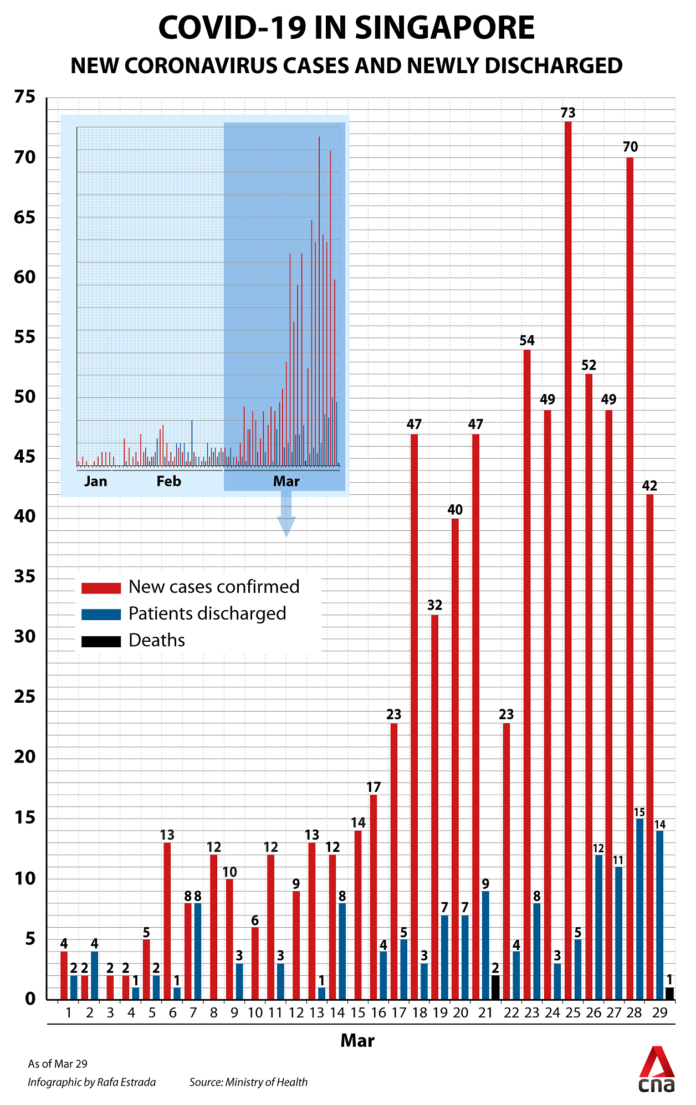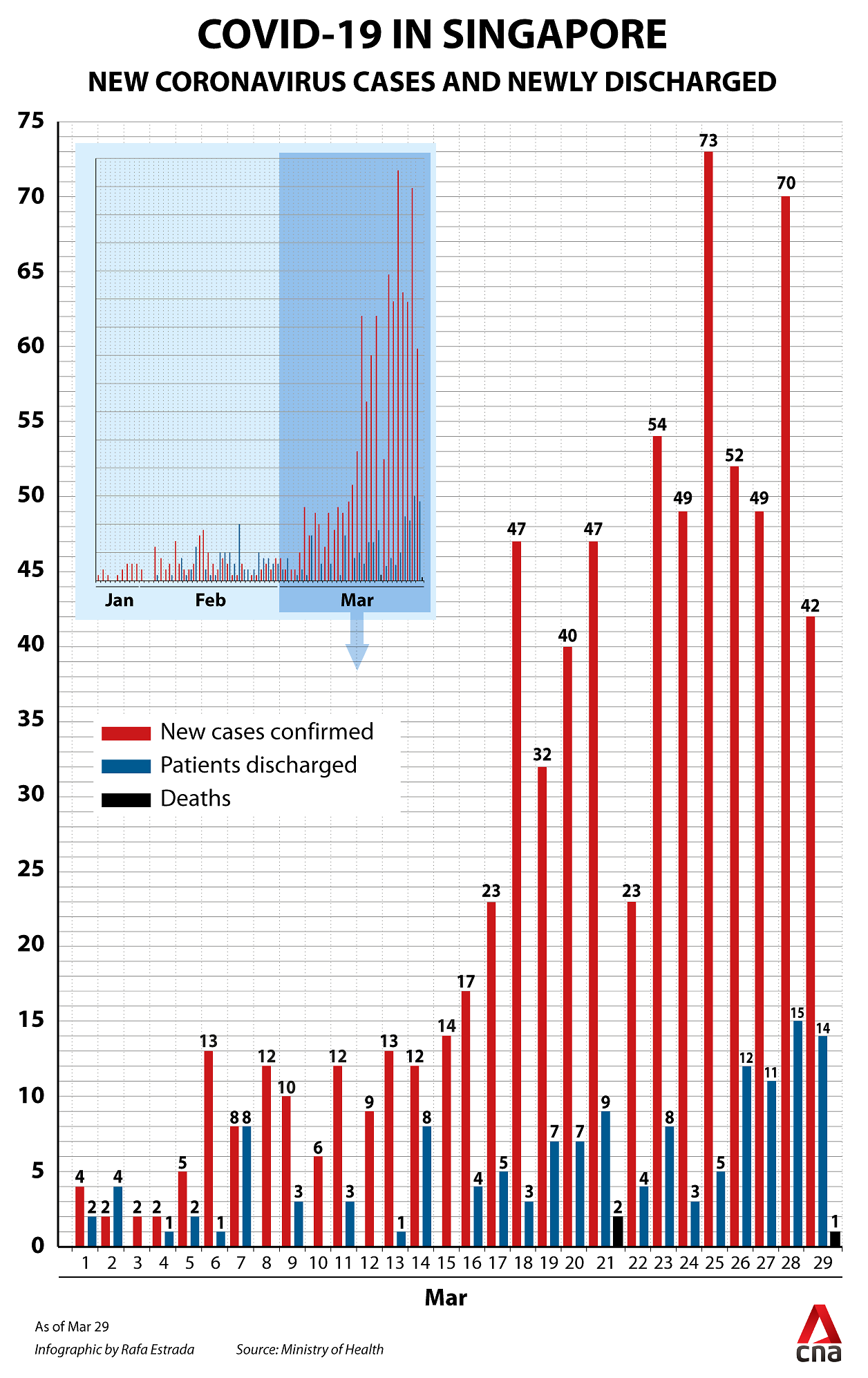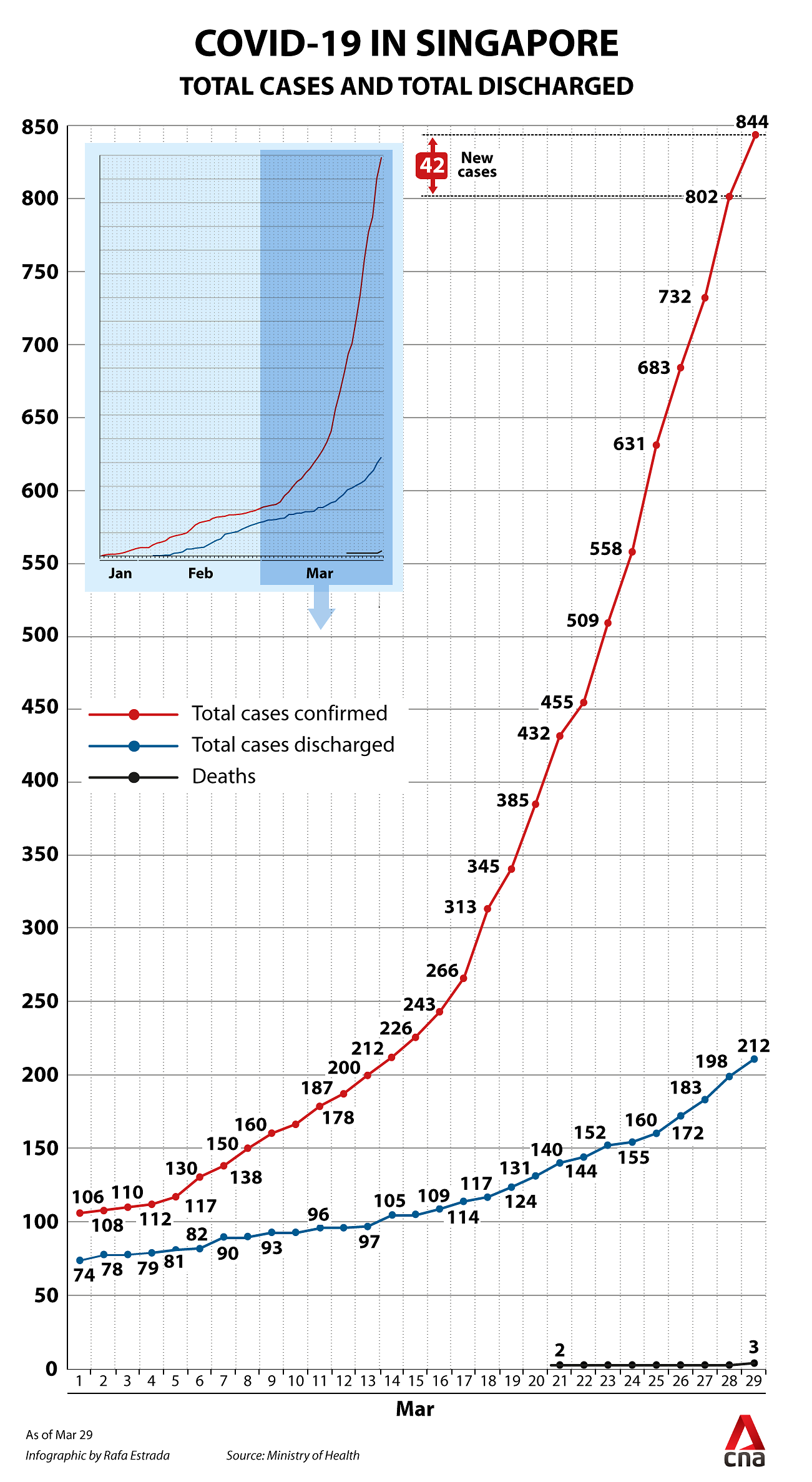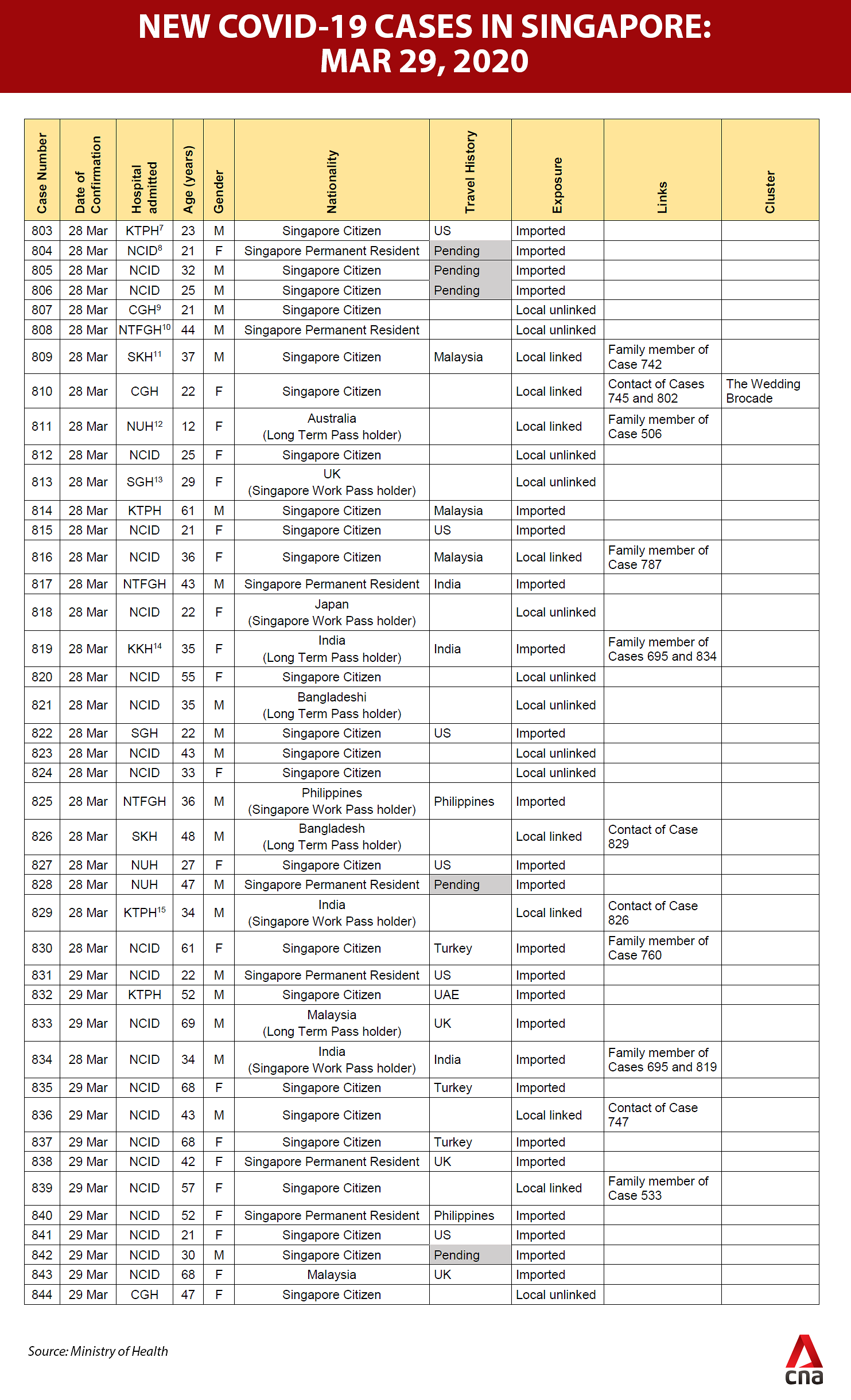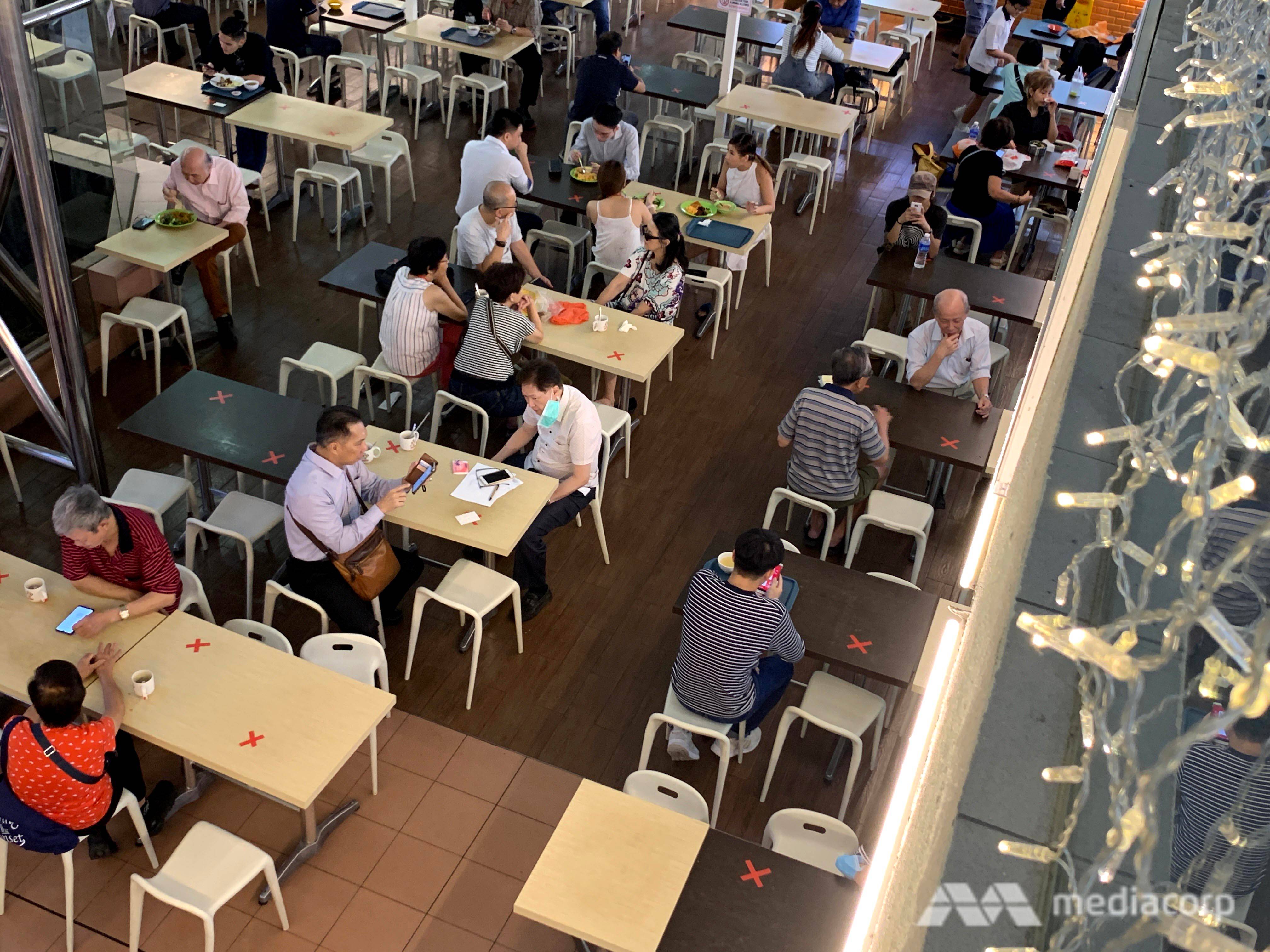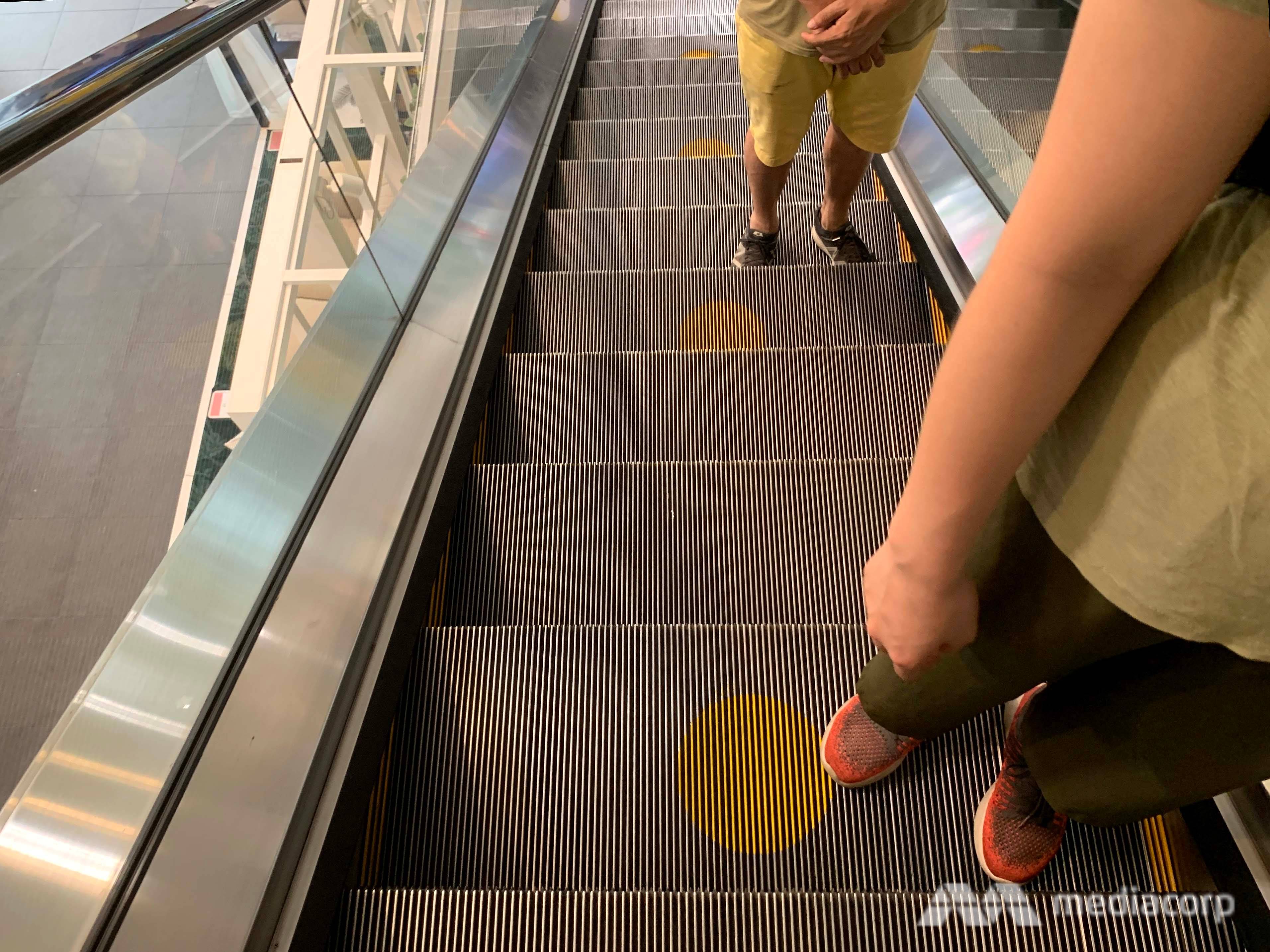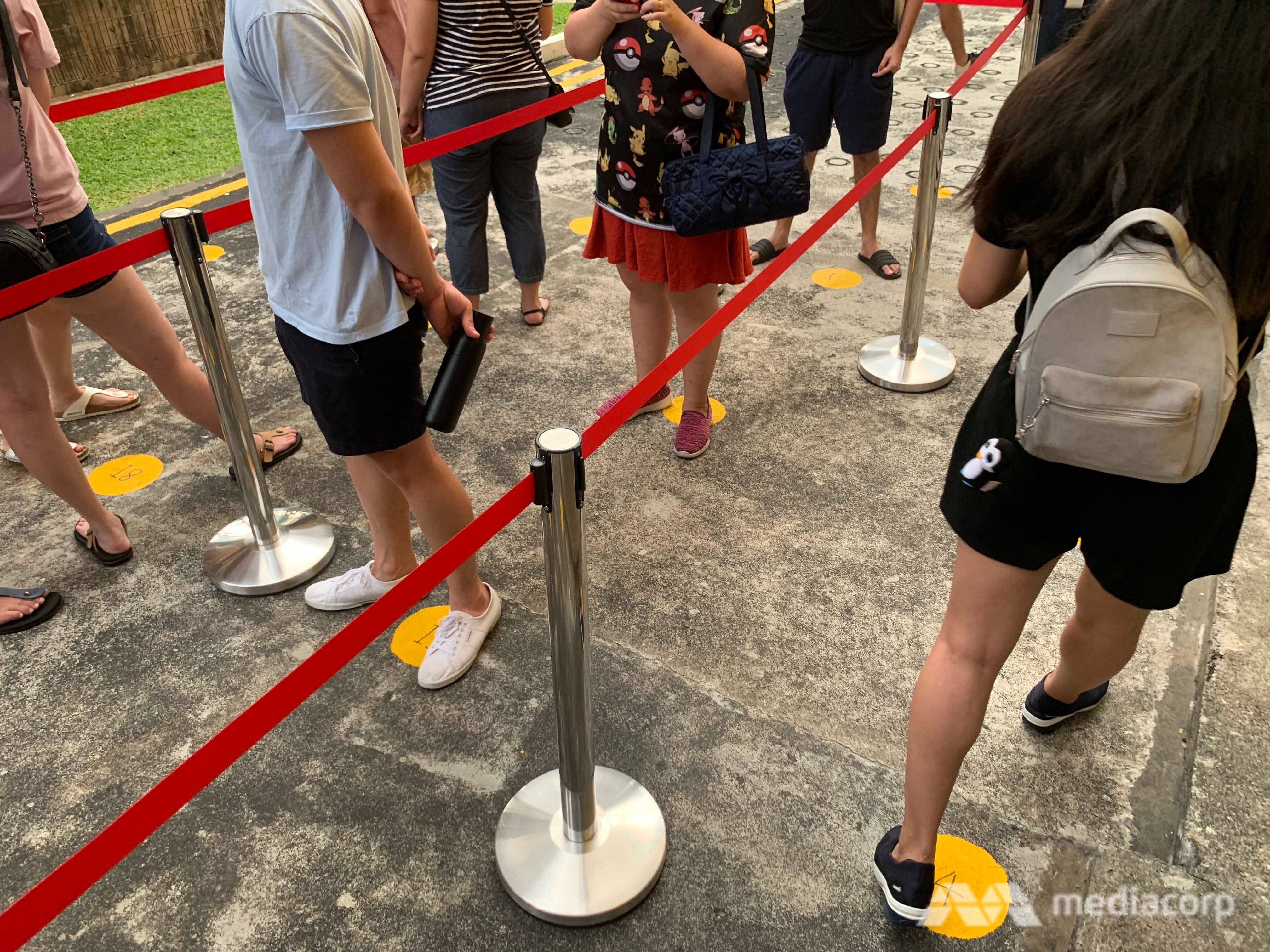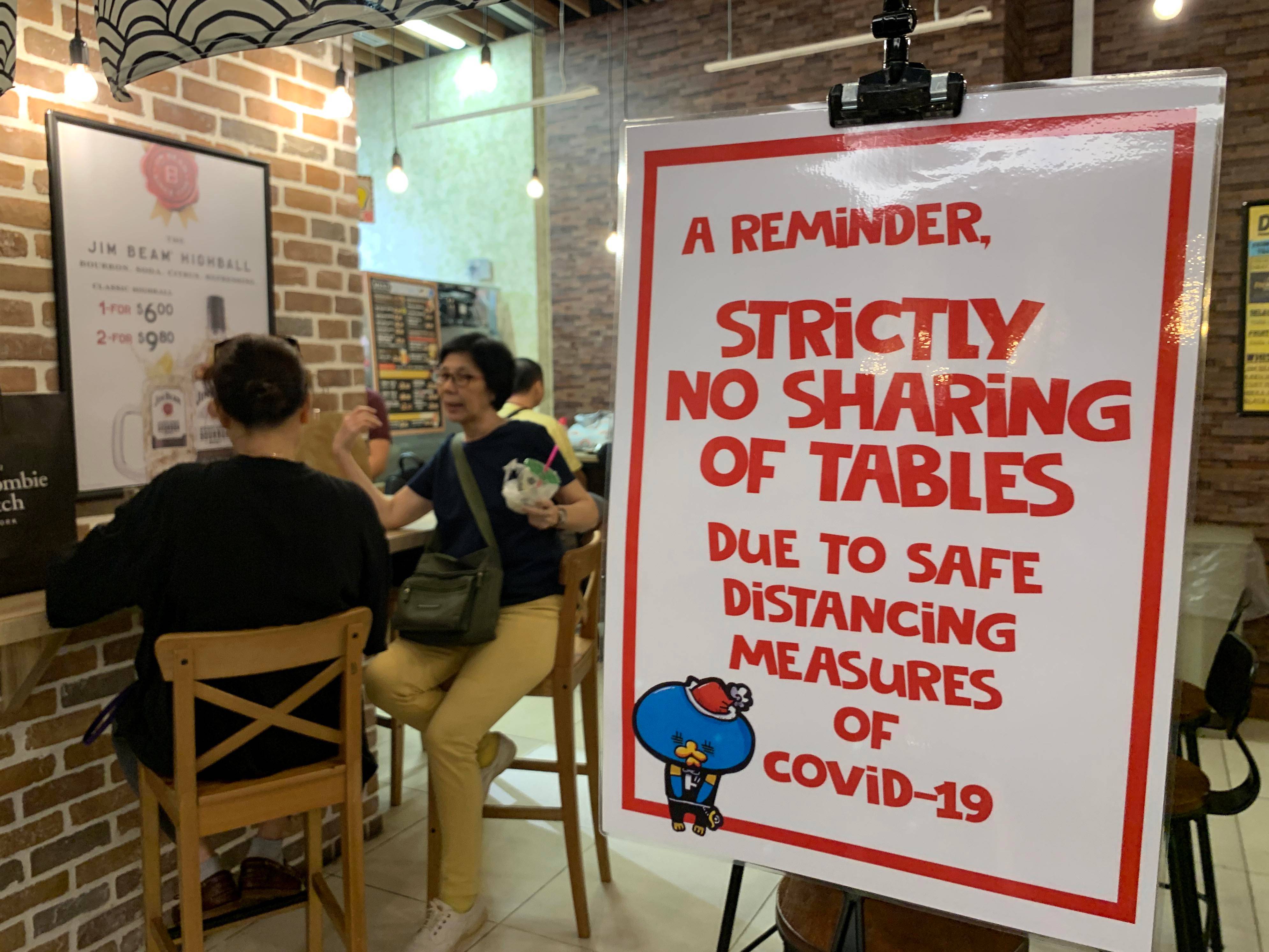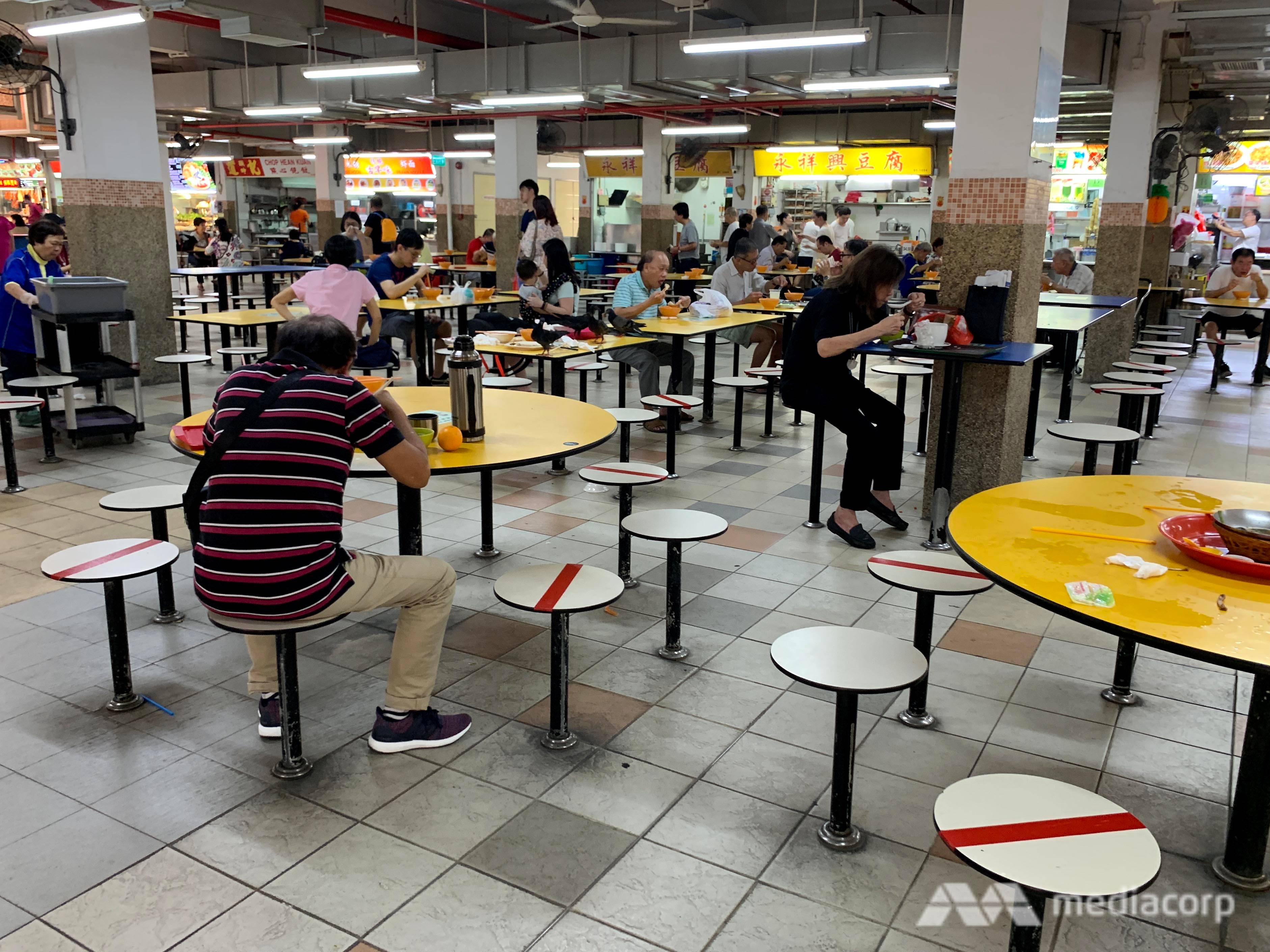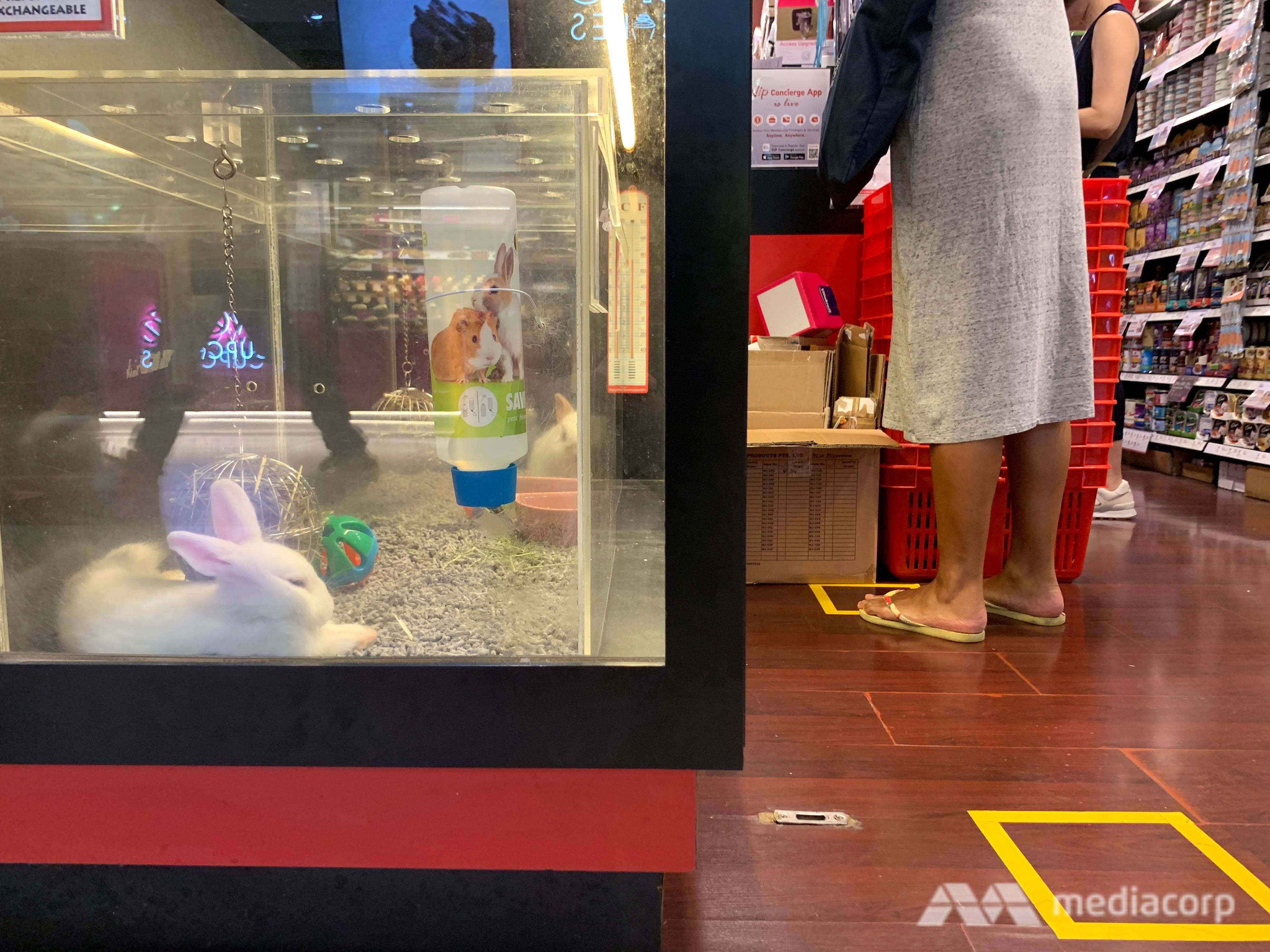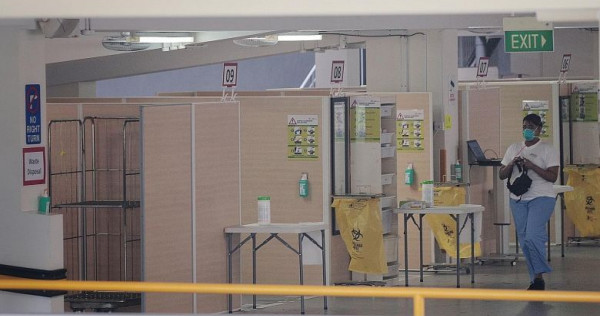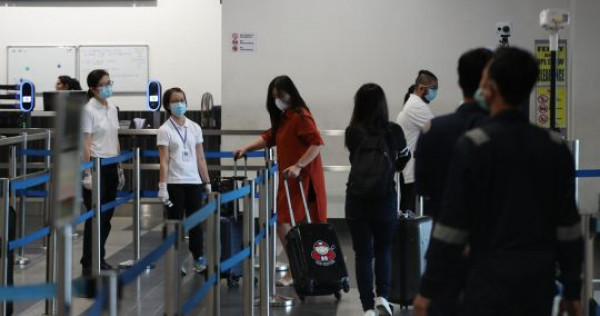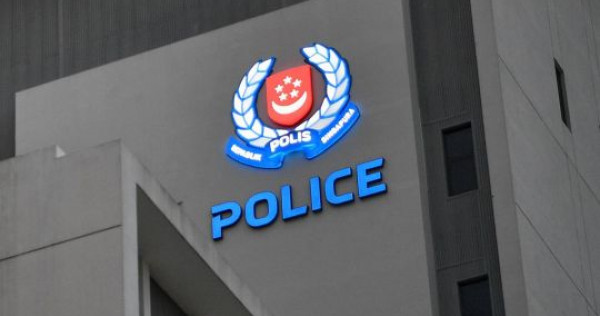SINGAPORE: They tagged her picture to a crying baby, as well as cropped her face out of the group photo which they posted on Instagram, while calling her “dumb”, “loser” and “trash”.
The 14-year-old was also added to a WhatsApp group with her bullies where they taunted her for being a slow learner — always having to stay back in school for remedial classes and not being able to read a comprehension passage fluently in class.
Three years on, Hannah (not her real name), who is dyslexic, still remembers the ordeal. “The words were very hurtful. I cried almost every night,” said the student currently pursuing a business course at the Institute of Technical Education (ITE).
Then there is May (not her real name), 13.
Also diagnosed with dyslexia when she was eight, May was bullied throughout primary school for not speaking well and being slower than the rest of her peers.
In one case, which happened when she was in Primary 3, May could not buy food during recess time as a male classmate had been stealing her money.
In another incident, a group of students took her clipboard and snapped it into half. They also created chat groups online to spread rumours about May and malign her.
The issue of bullying in schools came under the spotlight earlier this month, when one such incident at Mee Toh School was highlighted by Twitter user @4YSLZ in a series of tweets which went viral on social media — prompting a response from Education Minister Ong Ye Kung himself.
The user shared that her sister’s classmates had thrown pieces of paper with insulting notes in the girl’s face and picked on her race.
One of the insulting notes written on pieces of paper thrown on the victim from Mee Toh School, which was shared in a tweet. (Photo: Twitter/4YSLZ)
This was not the first time that her sister had been bullied, the Twitter user said, adding that the 11-year-old had been called names and cyberbullied. Her uniform was also vandalised in the past.
READ: Bullying incident at Mee Toh School ‘cannot be tolerated’: Ong Ye Kung
READ: Commentary: Many parents don’t know how to react when kids get bullied – and that’s okay
These incidents and interviews with bully victims, parents and teachers suggest that bullying is not uncommon in schools — from small unkind remarks to physical altercations and, more recently name-calling on social media.
Parents and victims acknowledged that intervention by teachers is no silver bullet for stopping bullying in schools. In fact, many of them said they were not expecting harsh punishments for the perpetrators. At the very least, they want the school to take all reports of bullying seriously and look into them.
In response to queries, the Ministry of Education (MOE) stressed that when bullying incidents are reported, they are “promptly investigated and appropriate disciplinary actions taken against the bullies”.
Teachers interviewed say tackling bullying in schools is not so straightforward and their approach may also not always satisfy parents. Not only does bullying come in different forms, it often takes place outside of the classroom, making it difficult to catch the bullies red-handed.
“LOW, STABLE” NUMBER OF CASES
The number of bullying cases has remained “low and stable” in the past five years, said MOE.
“However, even though the numbers remain low, we treat each incident with utmost concern,” the ministry reiterated.
In his Facebook post on the Mee Toh School incident, Mr Ong said that bullying is “wrong and cannot be tolerated anywhere, especially in schools”.
The incident also “goes against some very fundamental values of what we stand for as a society”, wrote Mr Ong, who added that he was dismayed and troubled after reading about it.
ON THE RECEIVING END
While schools take a firm stance against bullying, victims often suffer in silence and experience long-term effects of bullying.
Hannah, for example, would not have told her mother about the bullying incidents had the latter not felt that something was amiss when the girl was crying herself to sleep for two nights.
The reason — a tweet by her bully that said: “Your teeth are ugly.”
“I was afraid if I told my parents and they brought it up to the teachers, (the bullies) would call me a snitch,” she said, adding that her parents might also confiscate her mobile phone.
She also lied about having a stomachache to skip school for two days.
(File photo: AP)
Similarly, May admitted that she was being bullied only after her mother realised that she had been coming home hungry for nearly two weeks.
The girl, whose mother said she has trouble expressing herself, also did not speak up about the other incidents as she wanted to avoid any kind of social engagement with her bullies.
Meanwhile, Olivia (not her real name), who was bullied when she was 12, took a month to inform her parents about the incidents, as she had considered the bully her close friend.
The bully would scold Olivia, now 16, for arriving late for their appointments, and demanded that the latter not only pay for her meals but also serve them to her.
When Olivia attempted to apologise to the bully for arriving late, the girl would simply give her the cold shoulder. Later, the bully went online and mockingly parodied the lip-syncing videos which Olivia had posted on the social platform Musical.ly.
READ: Is your child a bully? How parents can spot the signs and what they should do
READ: Commentary: Parents need not fear getting ready for the first day of school
While such acts of mischief could have a lasting effect on those at the receiving end — many of them felt anxious and intense fear at the thought of going to school — several former bullies said they were unaware of the severity of their actions at that time.
ITE student Lisa (not her real name), who bullied Hannah when they were in secondary school, said the pair only buried the hatchet after they graduated.
She said: “I think at that time we were just being stupid teenagers. I didn’t like her because she liked to cry over every little thing so I felt like she was being an attention-seeker.”
After the bullying was reported, her father — who was raising her and two other siblings on his own — was called up by the school and she was asked to apologise to Hannah.
“I think I was more angry at her when I was asked to apologise. I didn’t understand what I did was wrong and I felt like everyone overreacted,” Lisa said.
It took her three years after the incident to realise how her actions could be deemed as bullying.
HOW TO IDENTIFY BULLYING
So, what separates actual bullying from childhood mischief?
MOE defines bullying as persistent behaviour intended to cause hurt, distress or humiliation and can be physical, verbal or psychological in nature.
Ms Joanne Chua, clinical psychologist at Mind What Matters clinic, said “markers” of bullying include a recurrence of the action, an intent to harm and distress caused to the victim.
“I think the fine line depends on how the person on the opposite side perceives it and how it impacts them,” she said.
READ: Students responsible for bullying incident at Mee Toh School disciplined accordingly: Principal
READ: Commentary: Goo Hara’s death should lead K-pop fans to do some soul-searching
Dr Gregory Liem, an Associate Professor at the National Institute of Education, said often, victims of bullying share the same characteristics.
They are usually more timid or anxious, physically weaker or smaller, and have traits that are different from the majority of students, such as a learning disability.
Ms Chua said bullying is also related to the “ingroup” and “outgroup” concept — where the treatment of the child by his peers depends on how he is perceived in the group.
“If the child is out of the group, they are more susceptible to bullying… but this doesn’t apply to all children,” she added.
Ms Chua said that trusted adults — such as parents and teachers — should look out for signs of distress in children which include changes in behaviour, mood and academic performance.
“Some research suggests that bullied children might also have psychosomatic symptoms such as headache, stomachache or night terrors,” she said.
While some bullying incidents may seem minor, such as name-calling, they can still have a significant impact on the child, the experts said.
Some long-term effects include mood disorder, anxiety and low self-esteem.
Two victims said they still have nightmares and are seeking help for their anxiety.
(Photo: Unsplash/Yuris Alhumaydy)
“SEPARATE THE ACTIONS FROM THE PERSON”
Despite the harmful effects on those at the receiving end, experts caution against ostracising or labelling misbehaving children or youth as bullies — especially by those in authority.
Dr Liem pointed out that some of the common traits among those in this group include the need to assert themselves as a stronger figure or of higher status, and they might be those who do not perform well academically.
Ms Chua said they are usually those who are unable to inhibit their responses.
READ: Bullying incident at Mee Toh School ‘cannot be tolerated’: Ong Ye Kung
READ: Commentary: Who really killed South Korea celebrity Sulli?
“Perhaps they want to interact with others but they don’t know how to, or it could also be a set of learnt behaviour that they picked up from their environment,” she said.
“It is good to separate the child from his actions (and) to not label the child as a bully. We don’t want to perpetuate the stigma of the child being a bully.”
Labelling children or youth could affect their identity and self-esteem, she added. Moreover, both victims and bullies could end up believing the labels are part of their identity and act them out.
“For the bully, I think it’s possible to correct the behaviour. I don’t think it’s very useful to label these children so early in their lives,” she said.
The experts recommended a holistic and systemic approach to tackling bullying cases.
“In terms of intervention, it has to be more systemic. It should not just be contained to the school. It should include the child’s environment, the people at home and the community the child is in,” said Ms Chua.
Dr Liem noted that it is easier for teachers to identify physical bullying since the damage to the victim can be more readily assessed, but the more challenging task is to detect bullying that takes place outside of the classroom — such as on social media.
He added that social media can be a double-edged sword; although a useful source of information, it also offers a good platform for bullies to prey on their victims.
SCHOOL PROTOCOLS TO HANDLE BULLYING CASES
Teachers and school counsellors said schools usually have a set of protocols to deal with bullying. These guidelines vary from school to school and can be tailored to meet the institution’s needs.
When a potential case of bullying is reported, the teacher generally will be required to make an incident report and interview the involved parties and any eye witnesses who are present at the time of the incident.
In serious cases, parents may also be called in to be interviewed and be involved in the mediation process.
But while these protocols may be there to help guide teachers, the teachers, counsellors and former educators interviewed agreed that dealing with bullying cases is a complex and tricky process.
READ: International outpouring of support after video of bullied Australian child goes viral
READ: Commentary: Teachers love their jobs and feel valued but face immense challenges
They could not be named because they were not authorised to speak with the media.
Those who teach at the primary school level said acts of mischief — be it unkind remarks or physical fights — occur among children every day and it may not be possible for them to follow up on every single case.
That is why, they said, teachers have to assess whether issues that are flagged up by students are severe enough to be escalated to the school’s discipline committee. Often, these would be repeated incidents that target a specific individual.
On the other hand, secondary school teachers said older students were usually shrewd enough not to misbehave in front of teachers and parents, and bullying thus often takes place behind the adults’ backs.
Compounding this problem is the fact that a lot of bullying now takes place online on social media platforms such as Instagram, Twitter and TikTok, which teachers may not always be very familiar with.
Said one educator: “Even if a teacher uses social media, how many would follow their students and how many students will let their teachers follow them? Some of them even have multiple accounts on the same platform.
“A lot of stuff is going on and it’s very hard for us to know something is happening until a student thinks it’s serious enough and trusts us enough to tell us the problem.”
Other teachers reiterated that they often have to depend on students to sound the alarm when bullying surfaces, as they cannot have eyes everywhere.
Even then, one teacher noted that not many students are mature enough to know when is the right time to flag serious issues.
(Photo: Unsplash/Craig Whitehead)
“Students don’t want to be known as a ‘snitch’… because of that usually when it’s brought to my attention (the bullying) has already become quite serious,” said the 37-year-old.
PUNISHING BULLIES: “HARD APPROACH” NOT ALWAYS THE BEST
Even when a case of bullying has been established, the school will have to grapple with another issue: What is the appropriate form of punishment for the student who has misbehaved.
Teachers said many factors would come into consideration here, including the student’s age, the severity of the bullying, and whether he or she is a repeat offender.
Agreeing with the views of psychologists and counsellors, the teachers said coming down hard on the bullies is not necessarily the best way to tackle the problem.
“The hard approach may not always work for some students… not all bullies should be caned. We have to look at situations on a case by case basis… there is no one-size-fits-all approach,” said one former educator.
READ: Commentary: Teenagers need help to deal with cyber flashing and online harassment
READ: Commentary: Most teachers have been bullied by students or their parents and it’s taking a toll
Another teacher noted that harsher punishments, such as suspension and caning, do not necessarily stop the bullies from retaliating against their victims.
That is why the disciplinary system needs to go hand in hand with counselling sessions for the victims, said the 34-year-old. Such sessions can help the victims to learn some strategies on how to handle the bullies.
For example, victims would receive tips on how to cope and what to do when bullied. Bullies themselves are also counselled to rehabilitate them and help them understand the underlying causes for bullying behavior.
School counsellors are usually roped in after a punishment has been meted out to help bullies understand how their actions and words have impacted the victims, and why the bad behaviour should not be repeated.
While the teachers said they try to step in and intervene when bullying incidents are brought to their attention, they noted that it is not always possible for each case to be settled according to the parents’ desired outcome.
For example, said one teacher, the bully’s parents may not agree with the school’s assessment which, in turn, would make it difficult for the student to understand the severity of his or her actions.
“Parents may sometimes be uncooperative because they think the issue is a small one. We cannot do much then because we can’t force the parents to support our programmes (if they do not want to),” he said.
(Photo: Unsplash/Kelly-Ann Tan)
At the other end, parents of bully victims may view the punishment meted out to the perpetrators as a mere slap on the wrist, causing them to think that the school does not take bullying cases seriously.
WHAT PARENTS SAY
Parents interviewed offered differing assessments on whether the schools had handled the cases involving their bullied children well.
Some felt that the schools did not take the reports of bullying seriously enough. For example, Olivia’s parents claimed that their daughter’s school had given short shrift to her case, after they had compiled a list of incidents and brought it to the discipline mistress’ attention.
“I felt angry that the school was not transparent nor thorough with its investigations… it felt as if the school had merely paid lip service to its ‘zero tolerance’ to bullying,” said the parents, who declined to be named.
But some parents were grateful for how their children’s schools did their best to look into the incidents and try to resolve them.
READ: What an effective parent-teacher meeting looks like, a commentary
READ: Thanks mum for not being a helicopter parent, a commentary
May’s teacher, for example, had stepped in and asked the boy who had been stealing from the girl to apologise and return her money. She also asked the bullies who broke May’s file to buy her a new one.
“I’m so thankful to that teacher. I told the teacher: ‘I’m so glad that I have you as my girl’s teacher’,” said May’s 45-year-old mother, who wanted to be known only as Ms Toh.
Another parent, a 43-year-old lawyer who declined to be named, said when her son, then 11, received hurtful notes from his classmates, his teachers swiftly stepped in and handled the situation effectively.
“It was never escalated to the principal, because there was no need to. They also showed anti-bullying videos to educate the rest of the class on what bullying is,” she said.
Parents reiterated that when their children were bullied, they, too, felt the pain.
“It is agonising to know your child is going through something and you can’t protect her. I would get upset and I would cry too,” said Ms Toh.
Agreeing, Olivia’s father said: “(Bullying) doesn’t just affect the victim, but the parents as well. There is a lot of guilt in me because she was suffering in silence.”
